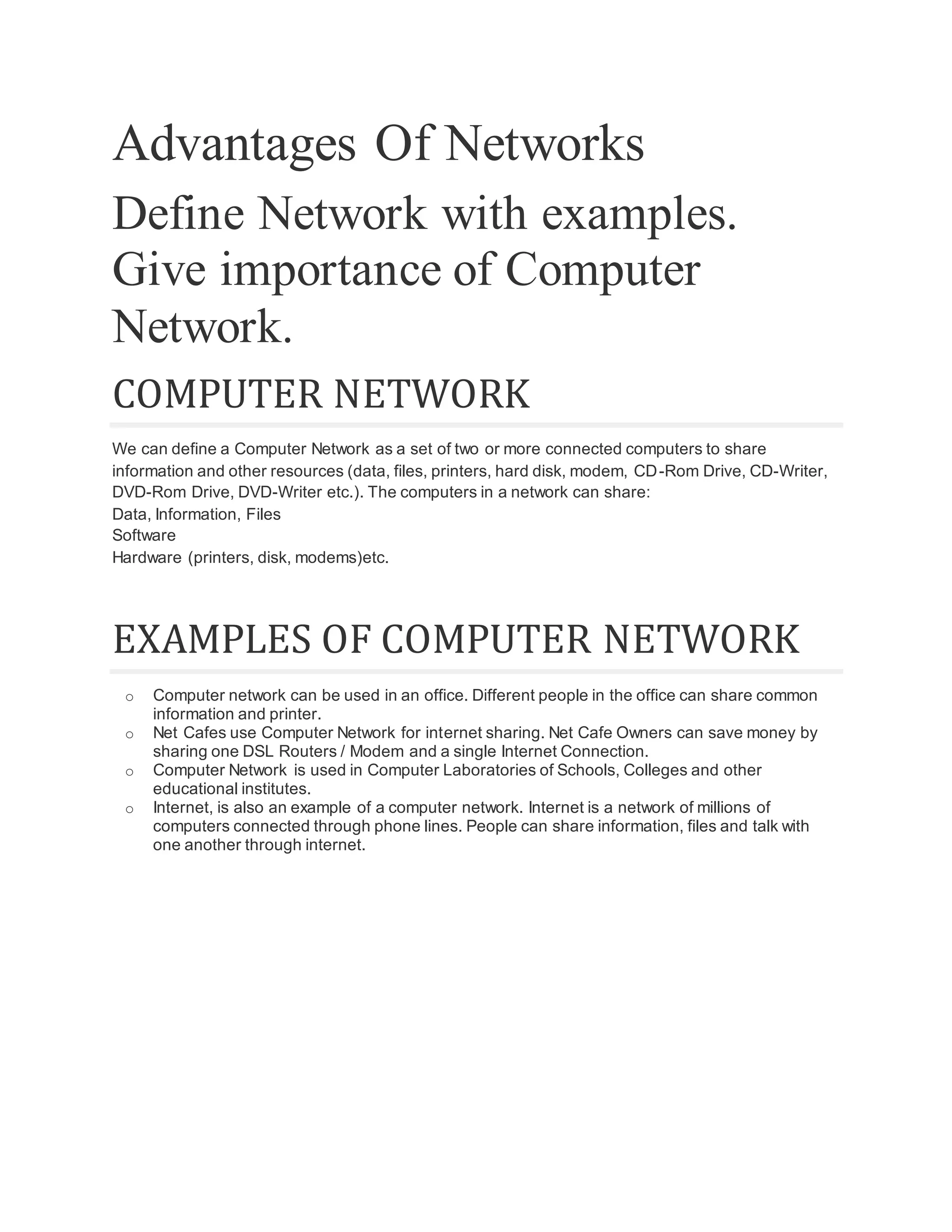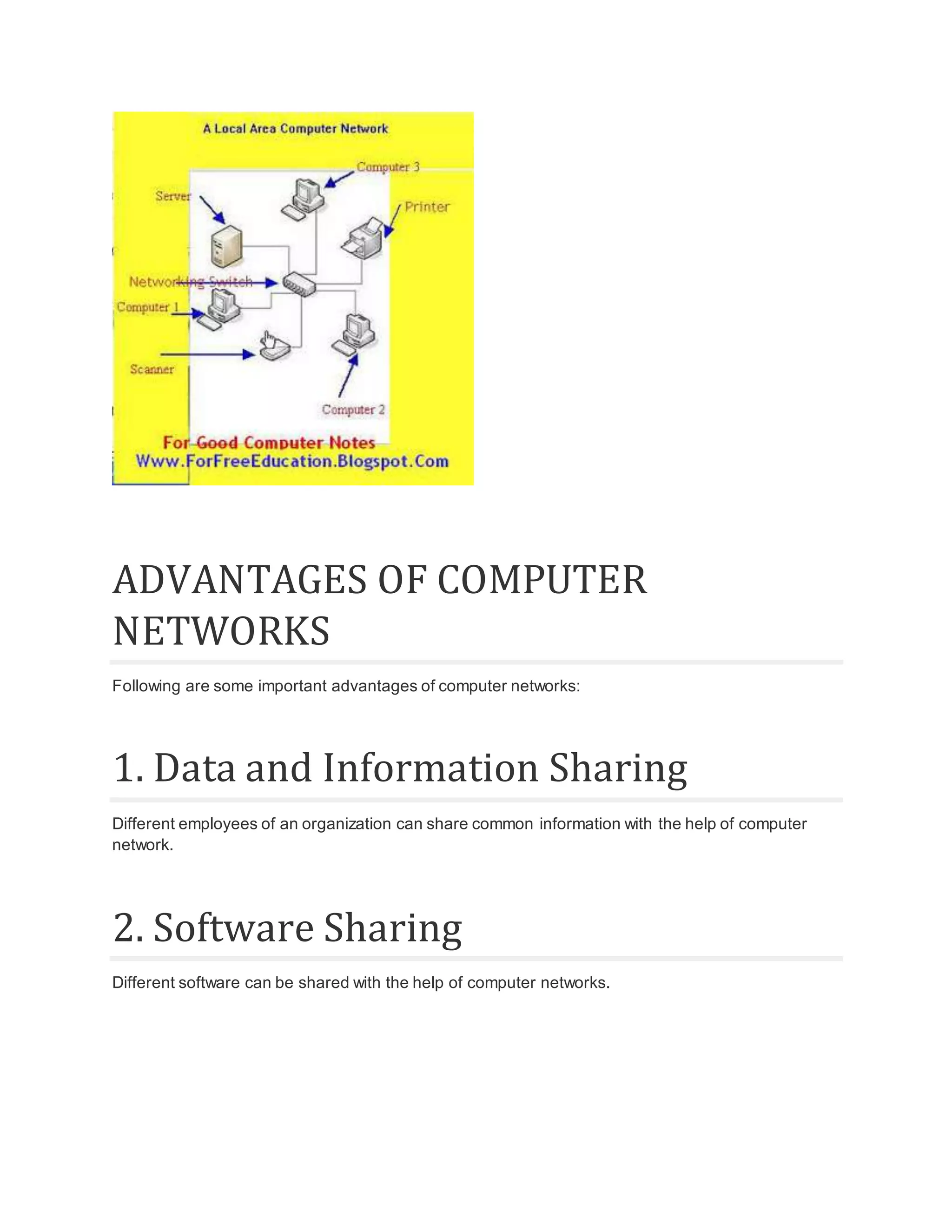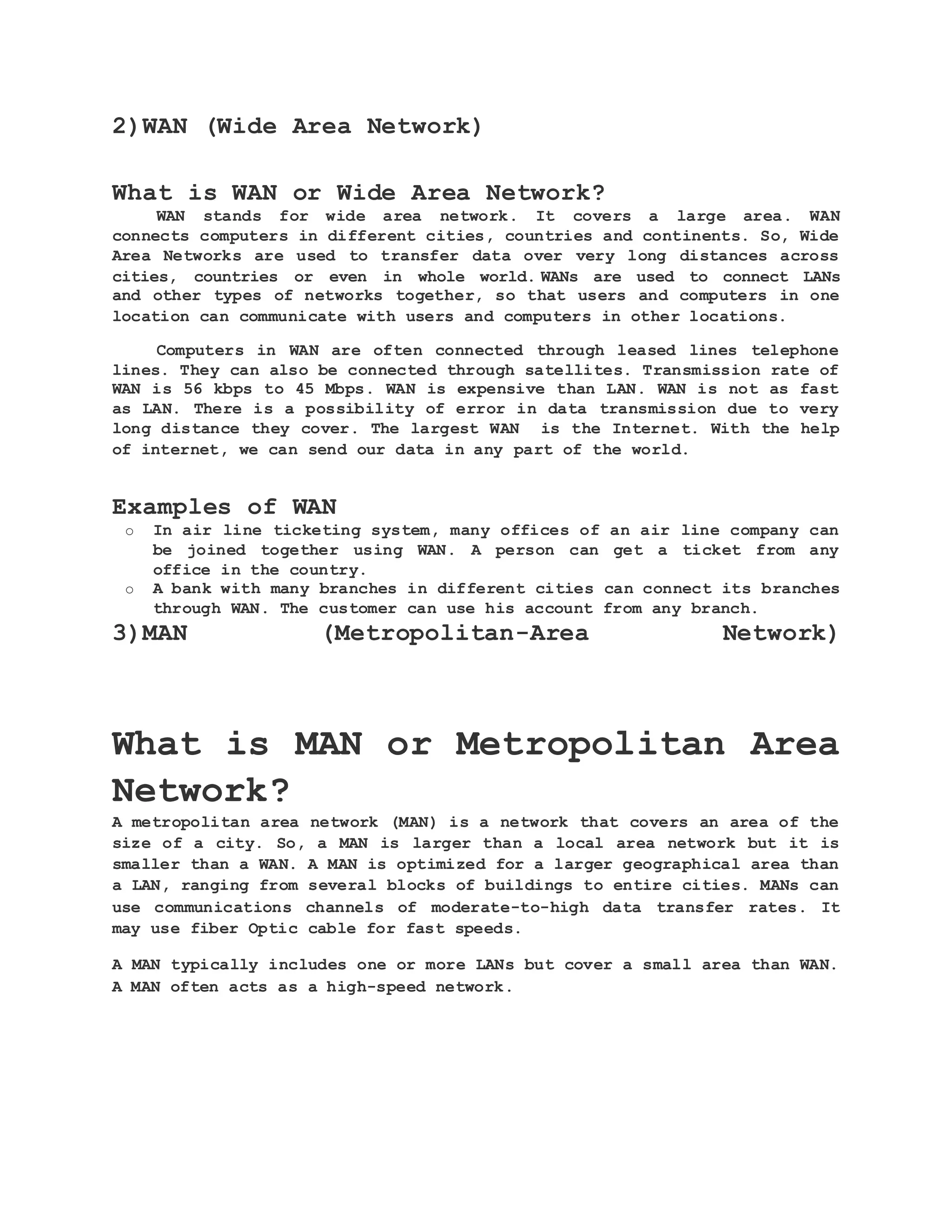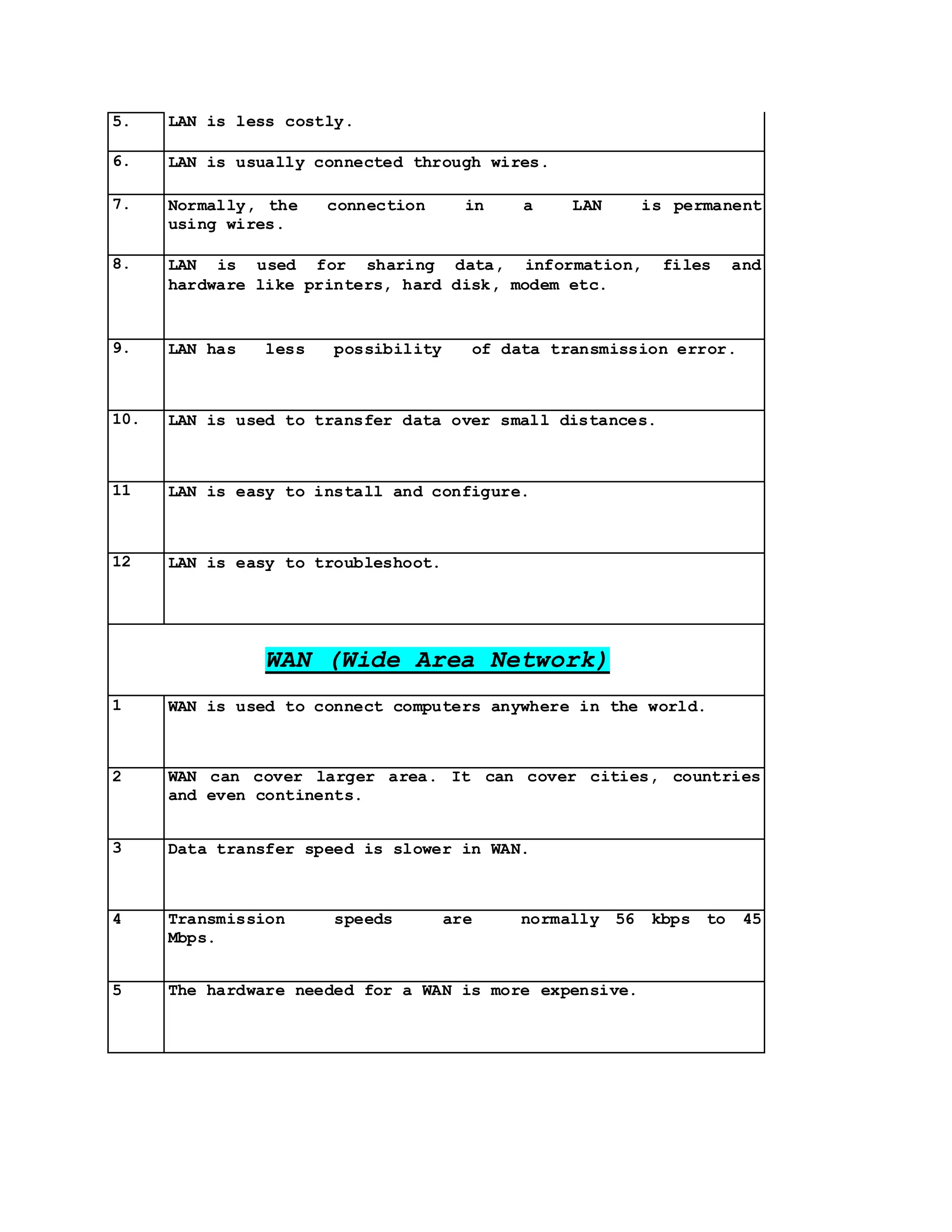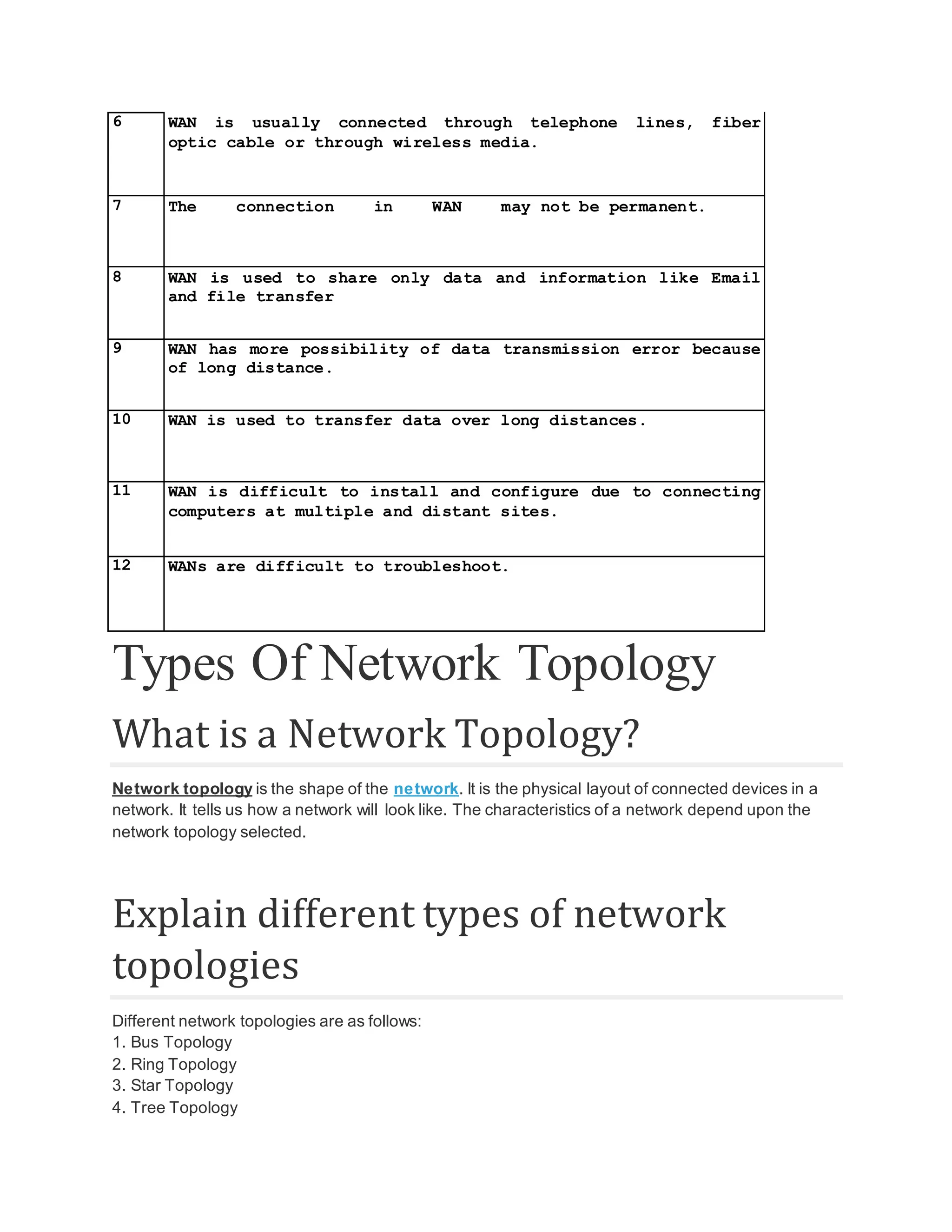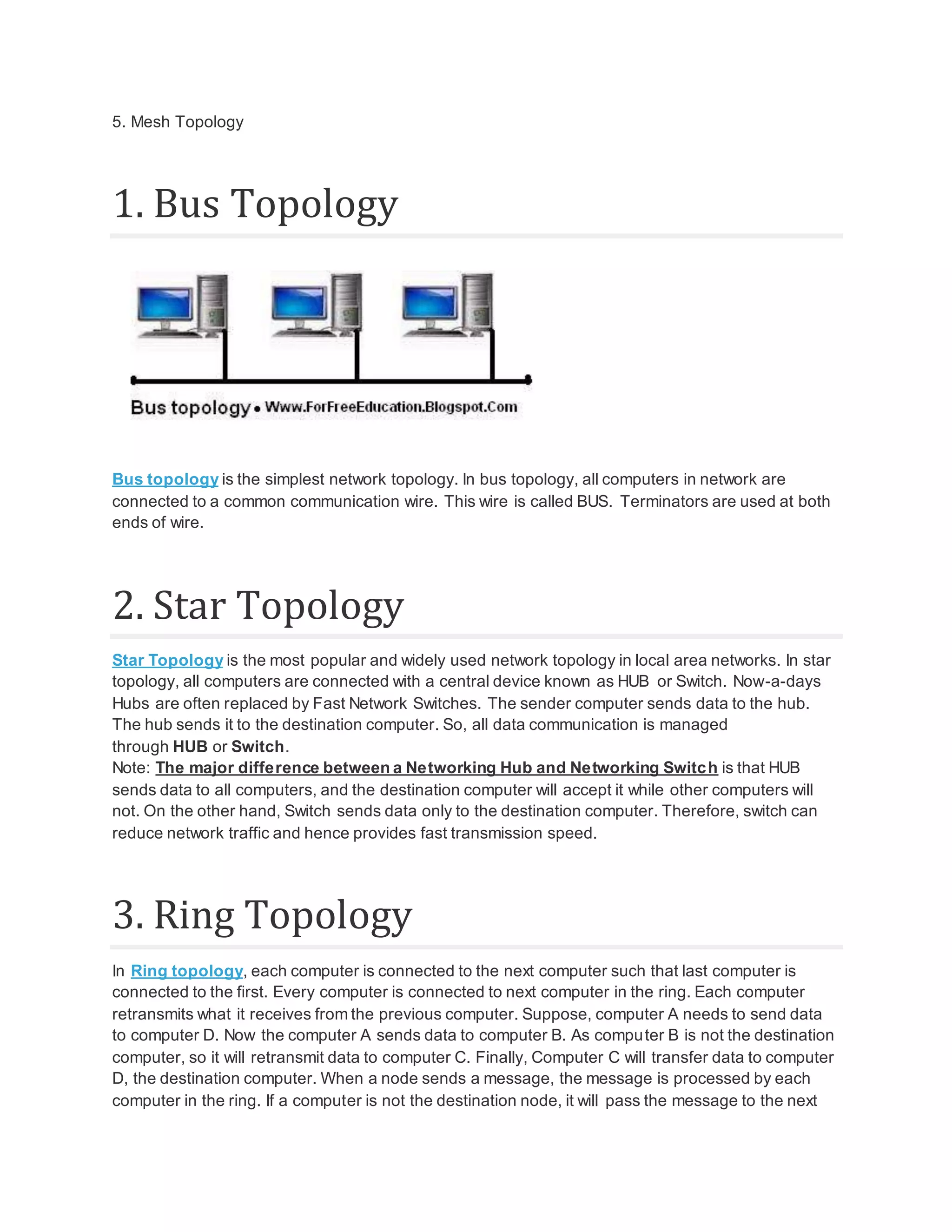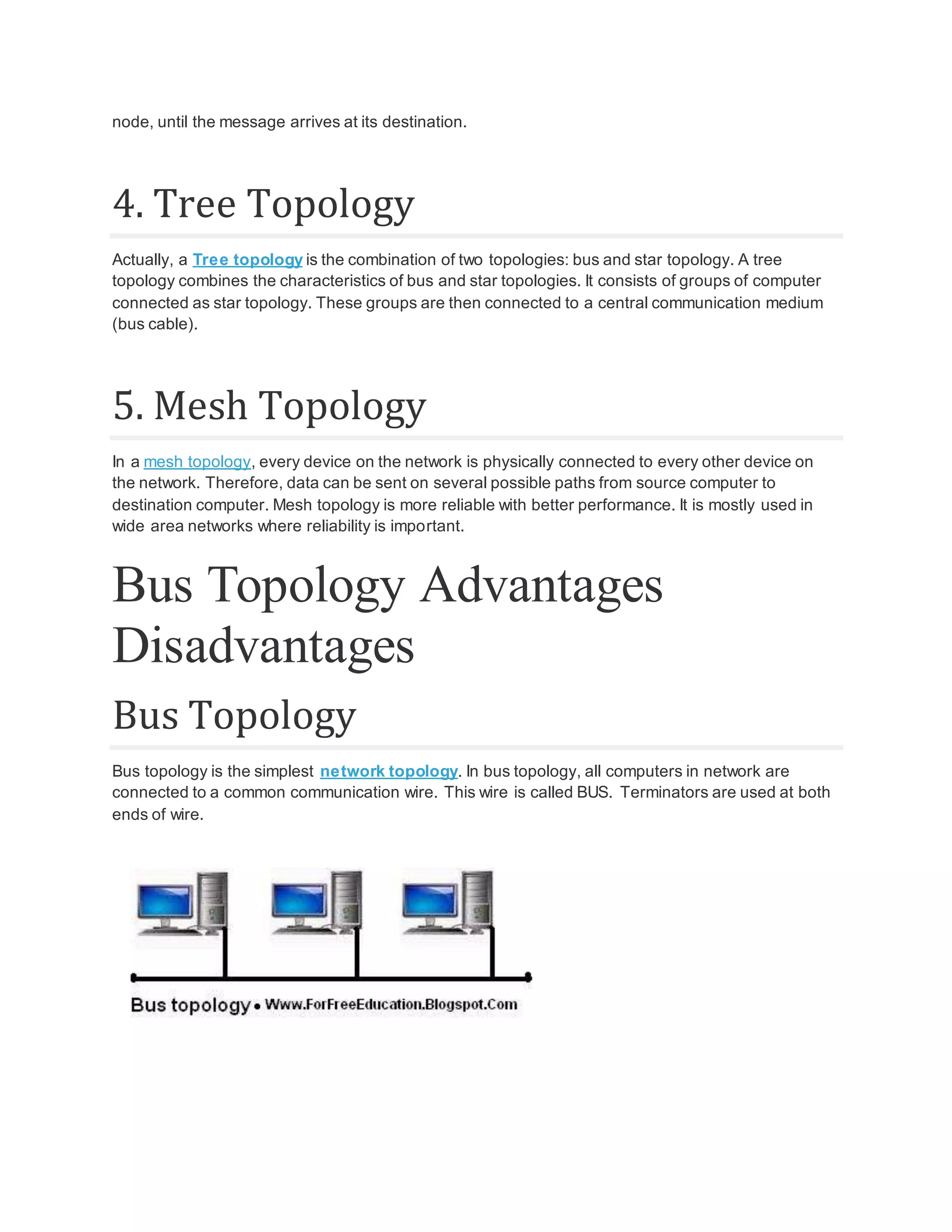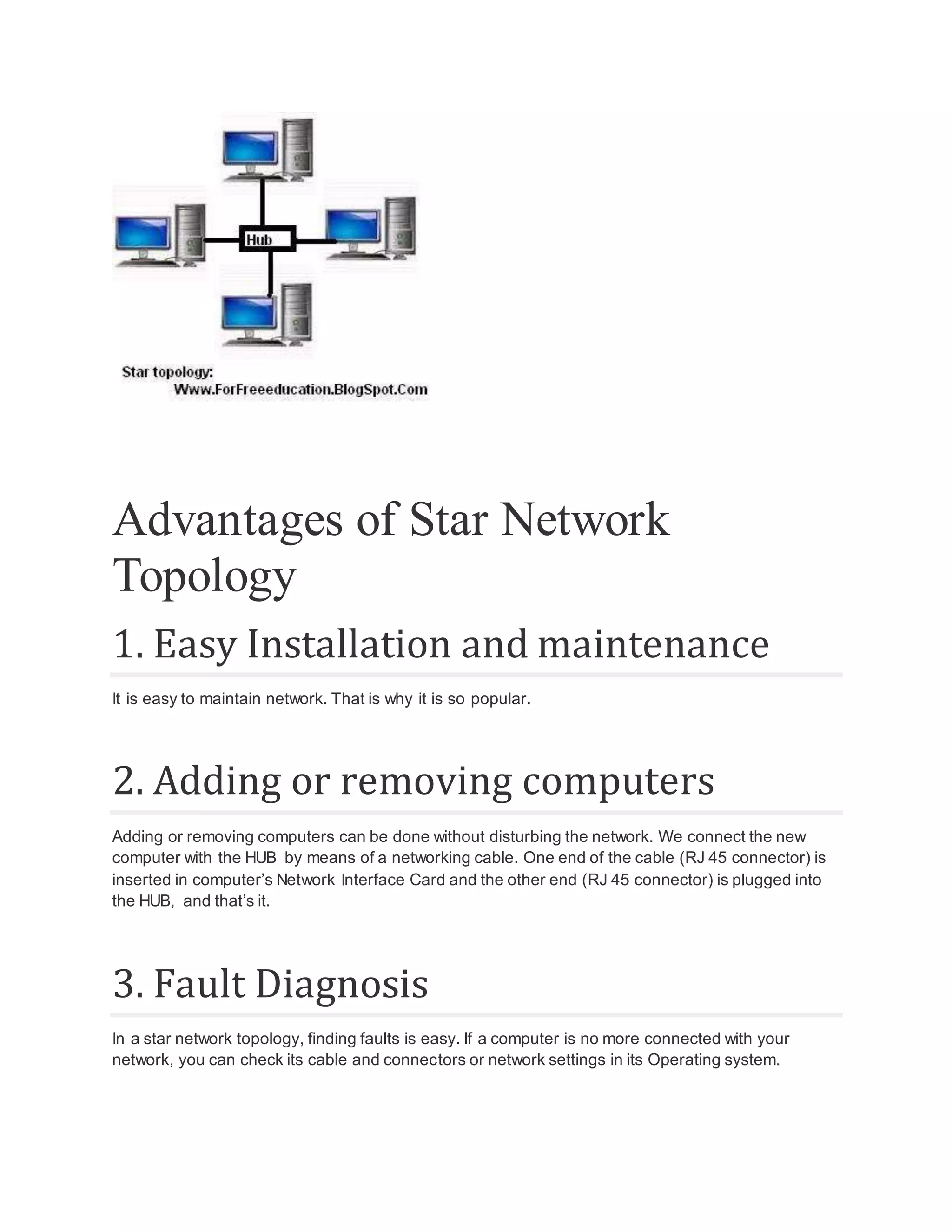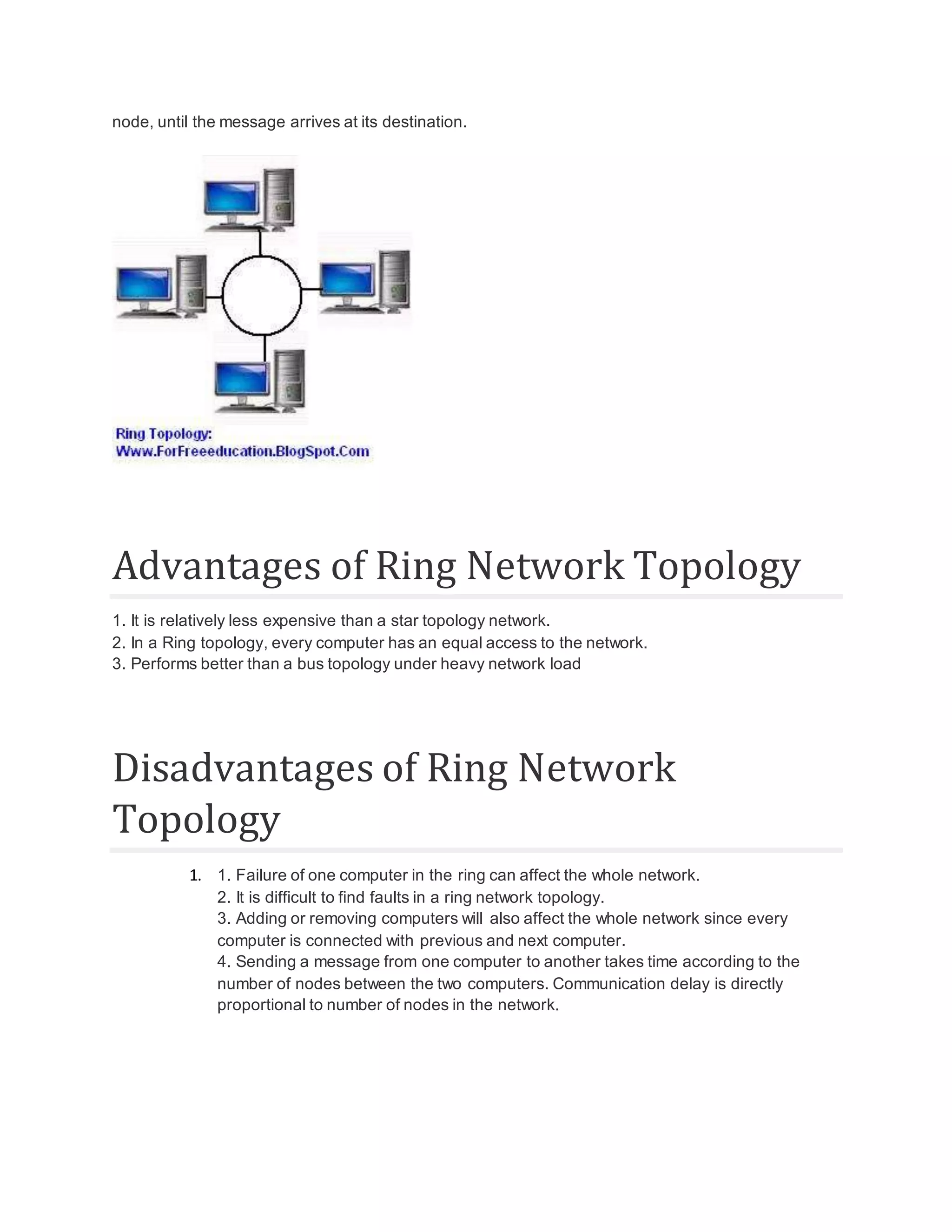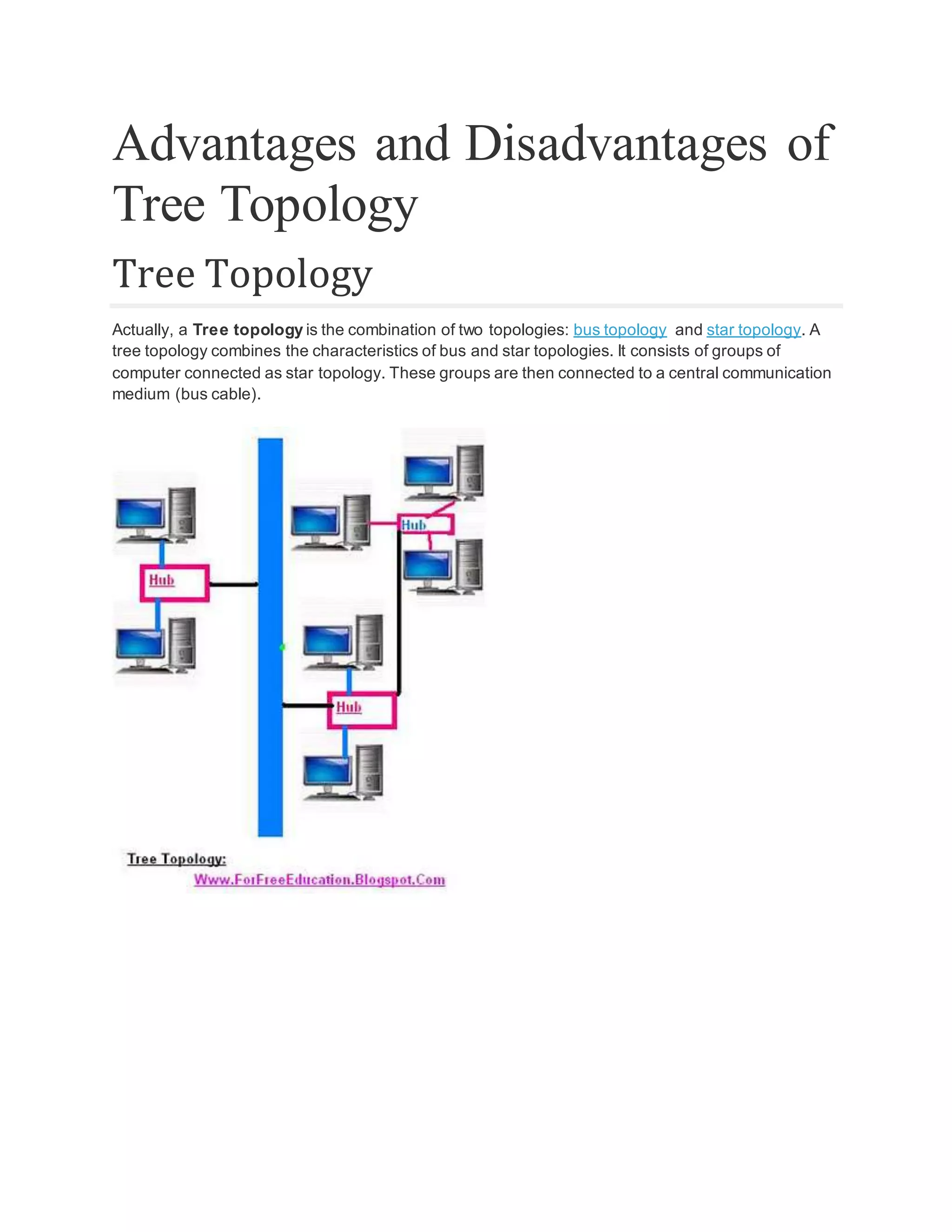This document outlines the advantages and types of computer networks, defining a computer network as a set of interconnected computers sharing resources. It discusses various network types such as LAN (Local Area Network), WAN (Wide Area Network), and MAN (Metropolitan Area Network), along with their characteristics, advantages, and disadvantages. The document also explains different network topologies, including bus, star, ring, tree, and mesh topologies, highlighting their respective pros and cons.
